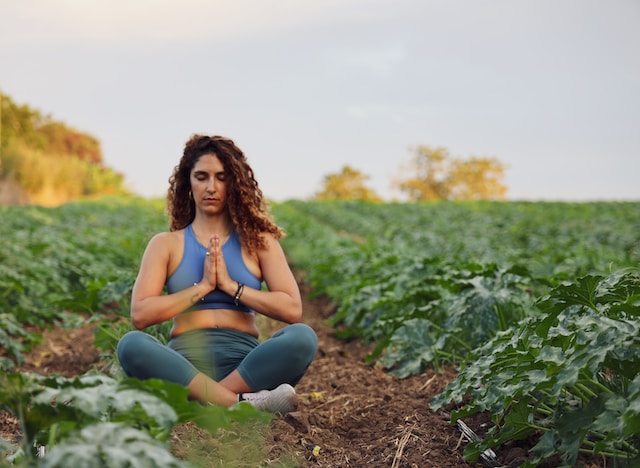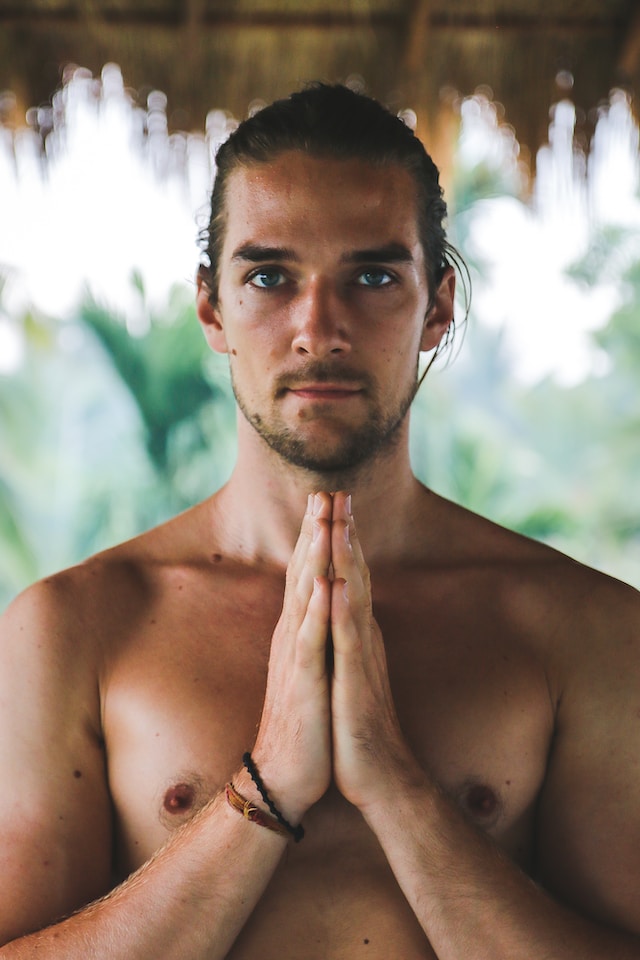
Meditation is a profound way to attain inner peace and tranquility. It is an ancient practice that has been passed down through generations, and it is still relevant today as a powerful tool for well-being. Read on and learn some tips on how to meditate to help you begin your meditation journey.
In the chaotic whirlwind of modern life, finding a moment of tranquility can seem like an elusive dream. But what if we told you that serenity is within your grasp, waiting to be discovered through the ancient practice of meditation? Step into a world where stress melts away, clarity blossoms, and inner peace becomes your sanctuary and learn how to meditate.
Benefits of meditation
Meditation is a practice that involves training the mind to focus and redirect thoughts, ultimately leading to a state of mental clarity and inner calm. It’s benefits extend to both the mind and body. Research has shown that regular meditation practice can reduce stress, anxiety, and depression while improving emotional well-being. It enhances concentration, attention, and cognitive abilities, leading to increased mental clarity and creativity. Physically, meditation can lower blood pressure, boost the immune system, and promote better sleep. Furthermore, it has been found to enhance self-awareness, compassion, and overall life satisfaction.
Setting realistic expectations
It’s important to approach meditation with realistic expectations. It is a skill that requires practice and patience and learning how to meditate properly can take time. The benefits may not be immediate, and it’s normal to encounter challenges along the way. In addition, different types of medication may also require different approaches. By setting realistic expectations and viewing meditation as a journey rather than a destination, you can embrace the process and experience the transformative power it holds.
Preparing for Meditation
Choosing a suitable time and place

Selecting a suitable time for meditation is one of the first things you need to consider when learning how to meditate. It is also crucial to establish consistency. Find a time when you can dedicate uninterrupted minutes to your practice. Mornings and evenings often work well, but choose a time that aligns with your schedule and when you’re most alert and focused.
Similarly, choose a quiet and peaceful place where you won’t be easily distracted. It could be a designated corner of your home, a garden, or any serene environment that fosters a sense of tranquility.
Creating a comfortable meditation space
Before you start learning how to meditate, designate a specific area for your meditation practice. Keep it clean, clutter-free, and visually appealing. Add elements that promote a peaceful ambiance, such as candles, incense, or soft lighting. Consider incorporating natural elements like plants or crystals if they resonate with you. Make the space inviting, ensuring that it’s a reflection of your personal taste and preferences.
Wearing comfortable clothing
Wearing the right meditation clothing matters. Choose loose-fitting, comfortable clothing that allows for unrestricted movement and doesn’t distract you during meditation. Opt for breathable fabrics that won’t restrict blood flow or cause discomfort. The goal is to create a physical environment that supports relaxation and ease as you learn how to meditate.
Minimizing distractions
Minimizing external distractions is essential to create an optimal environment while you learn how to meditate. Silence your phone or put it on airplane mode to avoid interruptions. Inform your household members about your meditation practice and request privacy during that time. Consider using earplugs or playing soft instrumental music to block out external noises that may hinder your focus.
Meditation Techniques
Mindfulness Meditation
1. Sit comfortably, close your eyes, and bring your attention to the natural rhythm of your breath. Observe the inhalation and exhalation, the sensation of the breath entering and leaving your body. Whenever your mind wanders, gently guide your attention back to the breath.
2. Scan your body from head to toe, observing any physical sensations without judgment or attachment. Notice areas of tension or relaxation, warmth or coolness, and the overall sensations present in your body.
3. As thoughts arise during meditation, don’t suppress or engage with them. Instead, acknowledge their presence, label them as “thinking,” and allow them to pass by, gently returning your focus to the breath or sensations in the body.
4. Approach your thoughts, emotions, and bodily sensations with non-judgmental awareness. Let go of the impulse to evaluate or categorize them as good or bad. Cultivate an attitude of acceptance and curiosity towards whatever arises in your experience.
Loving-Kindness Meditation
1. Begin by focusing on feelings of love and compassion within yourself. Visualize a loved one, a dear friend, or a pet, and evoke feelings of warmth and kindness towards them. Allow these emotions to permeate your being.
2. Expand the circle of loving-kindness by including yourself in the visualization. Wish yourself happiness, health, and inner peace. Gradually extend these wishes to others, starting with close family and friends and gradually encompassing all beings.

3. Expand your love and compassion to encompass all living beings. Visualize sending love, kindness, and well-wishes to strangers, people you find difficult, and eventually, all beings on earth. Cultivate a sense of connectedness and empathy for the entire universe.
Mantra Meditation
1. Select a word or phrase that holds personal significance or resonates with you. It can be a traditional mantra like “Om” or “Peace,” or any phrase that inspires calmness and focus. Repeat the mantra silently or aloud.
2. Find a comfortable rhythm and pace for repeating the chosen mantra. Use the natural flow of your breath to guide you. Allow the repetition to become a gentle and soothing background to your meditation, helping you anchor your focus and transcend discursive thoughts.
3. As you repeat the mantra, immerse yourself in its sound and vibration. If your attention drifts, gently bring it back to the mantra. Let go of any expectations or desires and simply allow the mantra to lead you into a deeper state of presence and inner stillness.
Guided Meditation
1. Utilize guided meditations available in various forms, including recordings, apps, or live sessions. Choose a guide whose voice and instructions resonate with you. Follow their prompts, allowing them to lead you through different meditation techniques and visualizations.
2. Pay close attention to the instructions and guidance provided by the meditation guide. They may lead you through breath awareness, body scans, or other contemplative exercises. Immerse yourself in their words and imagery, surrendering to the experience.
3. Release the need to control or direct your meditation when following a guide. Trust their expertise and surrender to the process. Let go of expectations and allow the guide’s instructions to gently guide your journey.
Walking Meditation
1. Choose a peaceful location, such as a garden, park, or quiet neighborhood, for your walking meditation. Ensure the path is free from obstacles or hazards to prevent accidents and distractions.
2. Begin by standing still, grounding yourself, and taking a few deep breaths. Start walking slowly, paying close attention to the sensations in your feet and legs as they make contact with the ground. Be fully present in each step.
3. Direct your attention to the physical experience of walking. Notice the shifting of weight from one foot to the other, the swing of the arms, and the subtle changes in balance and posture. Maintain a gentle and relaxed focus on the movement itself.
Meditation Posture
Sitting Meditation Posture

1. Find a seated position that is comfortable and sustainable for the duration of your meditation. You can sit cross-legged on a cushion or yoga mat, with one leg in front of the other or in a half-lotus or full-lotus position. Alternatively, you can kneel on a meditation bench or cushion, ensuring your back remains straight.
2. Align your spine naturally, keeping it upright and elongated. Avoid excessive leaning or slouching, as it can hinder deep breathing and lead to discomfort. Engage your core muscles to support the spine while allowing the rest of your body to relax.
3. Rest your hands comfortably on your lap, either palms facing up or down, or form a mudra (hand gesture) that feels natural and calming to you. You can experiment with different hand positions, such as placing your hands on your knees, fingers intertwined, or using a mudra like the cosmic mudra (placing one hand on top of the other, palms up, thumbs touching).
Alternative Positions
If sitting cross-legged on the floor is uncomfortable, use a meditation cushion or zafu to elevate your hips and create a slight forward tilt of the pelvis. This can help maintain the natural curves of the spine and alleviate strain on the lower back. Alternatively, you can use a meditation stool, which allows you to sit in a kneeling position with support for your knees and shins.
If sitting on the floor is challenging or not accessible, opt for a chair with a firm and supportive backrest. Sit with your feet planted firmly on the ground, hip-width apart. Maintain an upright posture, with your spine straight and shoulders relaxed.
In certain cases, such as when dealing with physical discomfort or injury, you may choose to practice meditation lying down. Lie on your back on a comfortable surface, such as a yoga mat or mattress. Keep your body relaxed and aligned, allowing your arms to rest comfortably by your sides.
Starting and Ending a Meditation Session
Starting the Session
Begin your meditation session by taking a few deep, conscious breaths. Inhale deeply through your nose, allowing your abdomen to expand, and exhale fully, releasing any tension or stress. This helps calm the mind and bring awareness to the present moment.
Set an intention or purpose for your meditation practice. It can be as simple as cultivating inner peace, self-compassion, or clarity. Formulate a short phrase or affirmation that resonates with your intention and repeat it silently or aloud.
Select the meditation technique that aligns with your current needs and preferences. It could be mindfulness meditation, loving-kindness meditation, mantra meditation, guided meditation, or walking meditation. Commit to practicing this technique for the duration of your session.
During the Session
When you learn how to meditate, be aware that your mind may wander. When you notice your attention drifting or getting caught up in thoughts, gently and non-judgmentally redirect your focus back to the present moment, whether it’s the breath, sensations, mantra, or visualizations.
It’s normal to experience distractions and a stream of thoughts during meditation. Instead of becoming frustrated or discouraged, cultivate patience and acceptance. View thoughts as passing clouds in the sky of your mind, allowing them to come and go without getting entangled in them.
To deepen your meditation experience, explore the sensations present in your body and the subtleties of your breath. Notice the rise and fall of your abdomen, the touch of air on your nostrils, or the gentle flow of energy throughout your body. Embrace these sensations as anchors to the present moment.
Ending the Session
How you end your session is as important as you start it when you are learning how to meditate. Towards the end of your meditation session, gently bring your attention back to the external environment. Notice any shifts in your awareness, such as a sense of calmness, clarity, or groundedness. Observe the sounds, smells, and sensations of the surrounding space.
Take a moment to express gratitude for the opportunity to meditate and cultivate inner peace. Acknowledge the effort and commitment you have put into your practice. Gratitude enhances the positive effects of meditation and nurtures a sense of contentment.
Before concluding your meditation session, gradually transition from the stillness of meditation to the activities of daily life. Move your body, stretch gently, and take a few deep breaths to reorient yourself to the present moment. Carry the calm and clarity of your practice with you as you continue your day.
As you learn how to meditate, you’ll find that meditation is not only a practice but a way of being—a path to self-discovery, inner peace, and personal growth. As you cultivate mindfulness and self-awareness through meditation, you may find that the benefits extend far beyond your formal practice, permeating into every aspect of your life. Embrace the transformative potential of meditation and embark on this beautiful journey of self-exploration and well-being.
